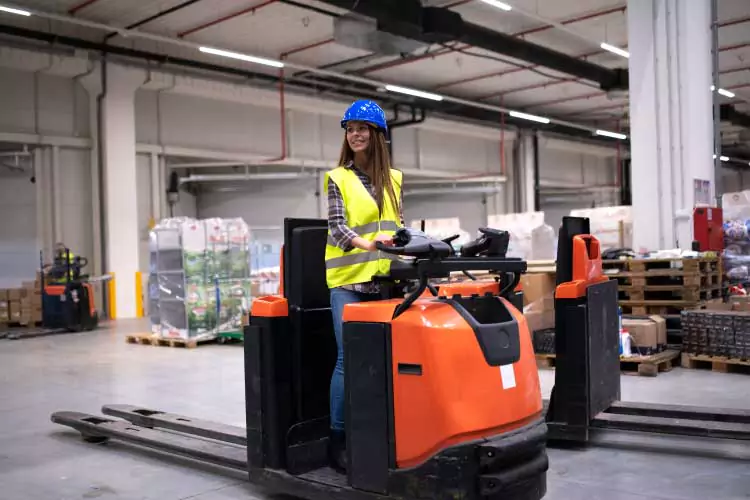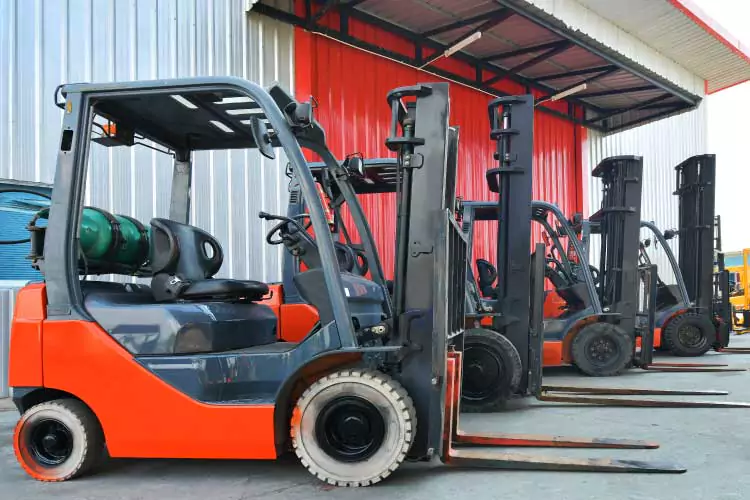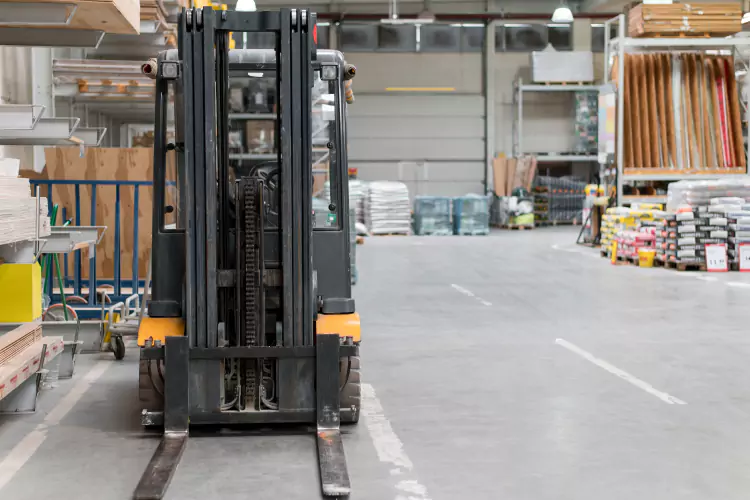When considering a forklift rental for your business, you might only focus on the size of the machine or the capacity it can lift. But, do you ever wonder, what is a carriage in terms of a forklift? To fully leverage the capabilities of a forklift, it’s crucial to understand the importance of the forklift carriage, which is an integral component of this versatile machine.
Understanding the Basics: What Is a Forklift Carriage?
The carriage of a forklift is its frontal aspect, which is designed to hold and handle the load. It serves as a critical connection point between the lift truck and the material being lifted, acting as the foundational structure where the forklift forks and various other attachments are mounted. Its function is not just limited to carrying the load but also maneuvering it. The carriage possesses the ability to travel up and down the mast channels, providing the forklift with the capability to lift, lower, and transport loads as needed. In essence, the carriage is a versatile element of the forklift that not only supports load management but also accommodates a variety of attachments that enhance the machine’s operational flexibility.
The Different Types of Forklift Carriages
Forklift carriages come in a variety of types, differentiated by their width and weight handling capacities. For instance, the class 2 forklift forks are common with smaller electric forklifts and feature a width of 16 inches. The class 3 forklift forks are often paired with mid-sized forklifts and measure 20 inches in width. For larger, heavy-duty machines, the class 5 forklift forks are used, boasting a width of 28 inches. But, forklift carriages aren’t just limited to these classifications. There are also unique types designed for specific functions. For example, rotating carriages facilitate the rotation of loads while side-shifting carriages can move loads laterally without having to reposition the forklift. The multi-purpose carriage is another noteworthy type, capable of executing various functions simultaneously. Thus, understanding these different types of carriages and their respective applications can help enhance your forklift’s efficiency and versatility.
Importance of a Forklift Carriage in Material Handling
In the world of material handling, the carriage plays an indispensable role. This component’s structural design and functionality have a direct bearing on the forklift’s efficiency and safety in transporting loads. When a carriage is well-constructed, it offers a stable platform for load handling, along with increased visibility that helps minimize potential mishaps, creating an environment conducive to a smooth operation. The carriage also opens up a world of possibilities in terms of the forklift’s versatility. The ability to attach different tools to the carriage means it can accommodate various tasks – be it rotating a load, moving it to the side, or handling unusually shaped materials. By enabling such flexibility, the right carriage can significantly amplify productivity and optimize forklift utility in your material handling processes. Therefore, understanding the role of the carriage and its implications is key to maximizing the benefits of your forklift.
Selecting the Right Carriage for Your Forklift Rental

The process of choosing the correct carriage for your forklift rental can be broken down into several key considerations. Initially, a deep-dive assessment of your operational requirements is crucial. If your tasks primarily involve the transport of palletized items, a standard carriage could be sufficient. Conversely, managing unique loads may necessitate a specialized carriage with distinct attachments. Further, the dimensions and mass of your loads should guide your selection. For the transportation of large, heavy items, a carriage corresponding to class 5 forklift forks is an ideal choice. Conversely, smaller and lighter loads may be best suited to a class 2 or class 3 carriage. It’s critical to remember that selecting the appropriate carriage not only enhances operational safety and efficiency but also contributes to the extended lifespan of the forklift.
Maintaining the Forklift Carriage: A Key to Longevity
Proper maintenance of the forklift carriage is fundamental to prolonging the forklift’s operational life and maximizing its performance. This involves several key practices that should be a part of your regular maintenance routine. Begin with inspecting the carriage for any signs of wear and tear. Frequent use can lead to natural wear, which, if left unchecked, can affect the stability and safety of load handling. Additionally, check for the smooth motion of the carriage along the mast channels. Any hindrance in its movement can decrease the efficiency of your forklift and could indicate a more significant issue. Lastly, it’s important to verify that all the attachments, whether they’re class 2, class 3, or class 5 forklift forks, are securely attached to the carriage. Loose or improperly attached components can pose a safety risk during operations. Regular maintenance and prompt addressing of any discovered issues will not only ensure the longevity of your forklift but also safeguard its operational efficiency and safety.
Find the Perfect Forklift for Your Project with National Dispatching
Diverse projects require diverse forklifts. That’s why National Dispatching is your trusted partner in material handling solutions. We go beyond the generic approach, meticulously pinpointing the most fitting forklift for your specific needs. This ensures maximized efficiency, safety, and uninterrupted workflows, allowing you to focus on what matters most. Contact us today to find your perfect forklift match.


